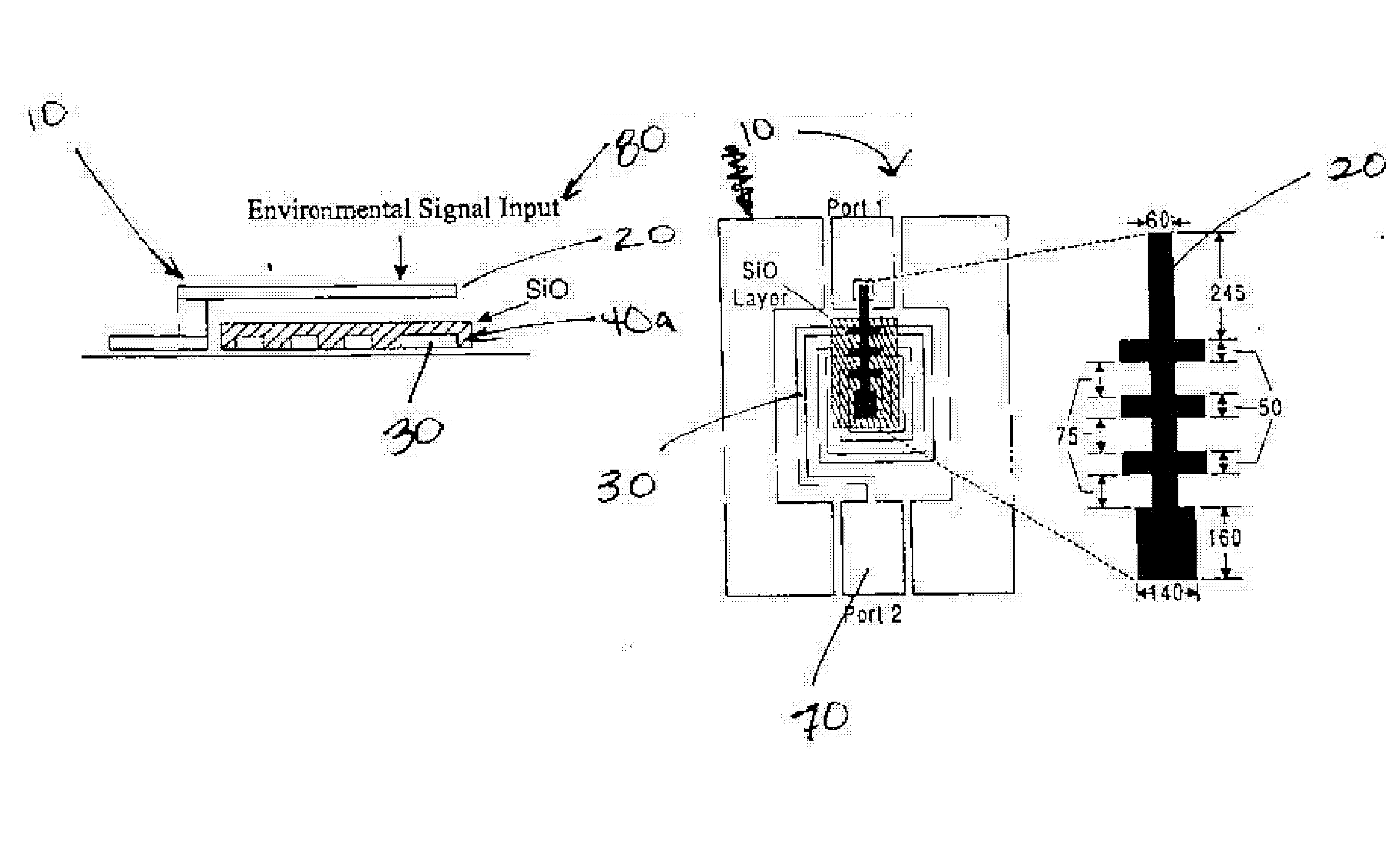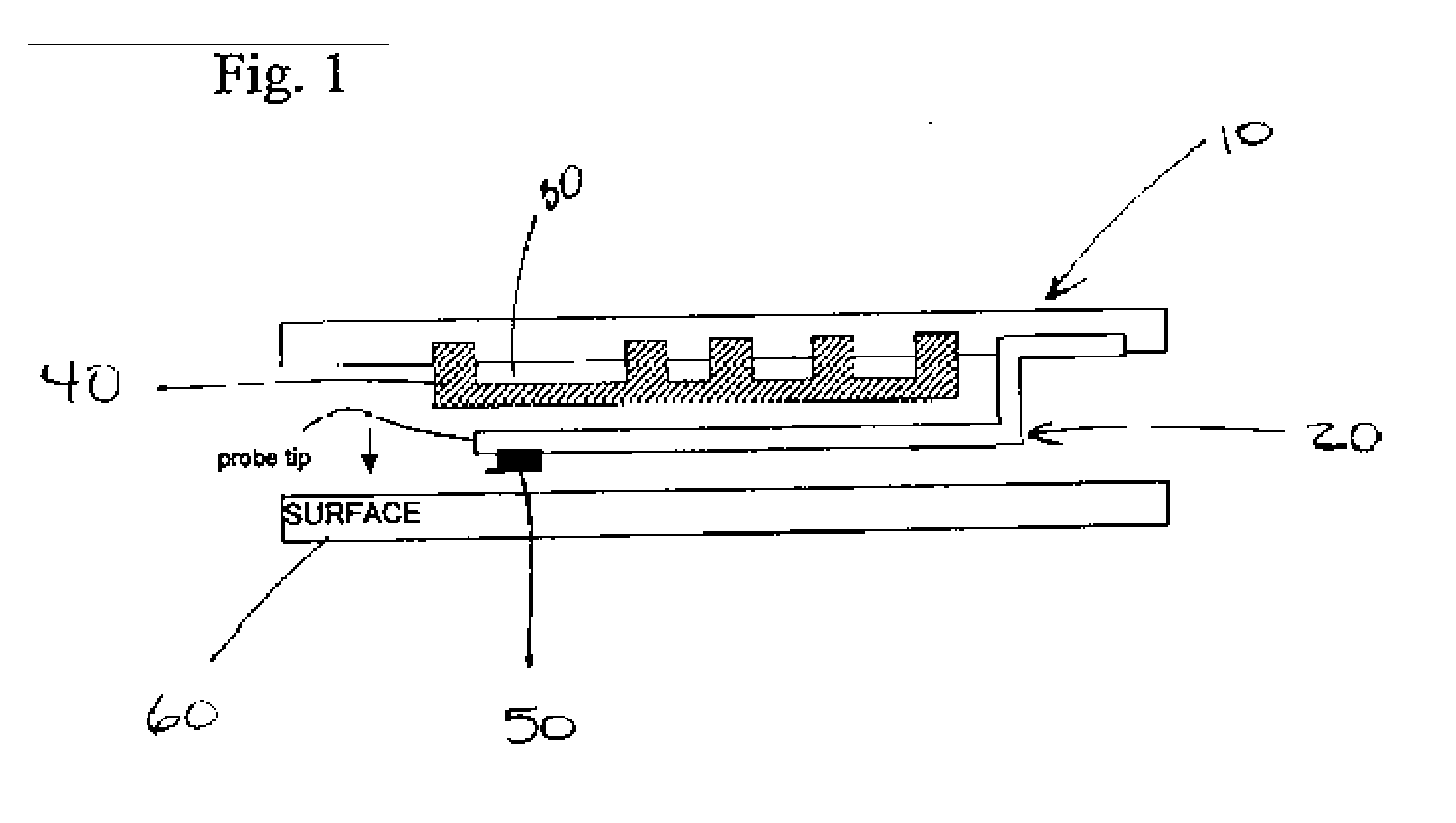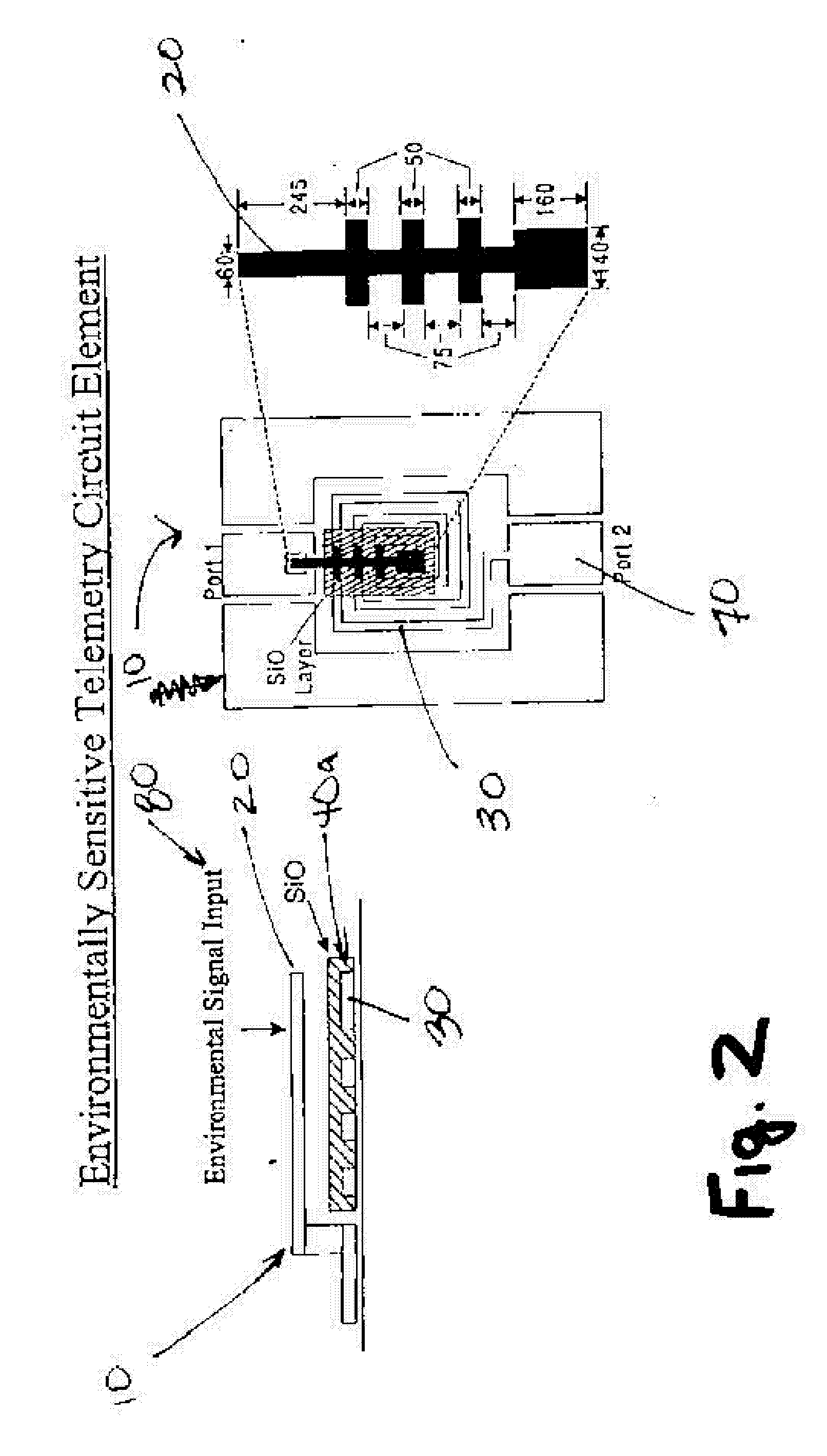Microwireless Integrated Enviromental Sensor and Transmitter System
- Summary
- Abstract
- Description
- Claims
- Application Information
AI Technical Summary
Benefits of technology
Problems solved by technology
Method used
Image
Examples
Embodiment Construction
[0035] Referring now to FIG. 1, there is an illustration of the cross section of a portion of a radio frequency integrated circuit (10), including mechanical means (20) electromagnetically coupled to a substantially coiled metal trace (30) through a dielectric means (40), all elements being integrally coupled to the radio frequency integrated circuit. In this configuration, the mechanical means is illustrated as a cantilever beam modified with the proper material (50) to be operable as a probe device for sensing environmental or physical attributes of a surface (60). The mechanical means embodied as a cantilever beam can be positionally varied by environmental or physical stimuli, which modifies the level of electromagnetic interaction between the mechanical means and the metal trace. The metal trace and mechanical means are comprised of conductive material so as to permit electromagnetic interaction therebetween. The dielectric means is integrally formed substantially between the m...
PUM
 Login to view more
Login to view more Abstract
Description
Claims
Application Information
 Login to view more
Login to view more - R&D Engineer
- R&D Manager
- IP Professional
- Industry Leading Data Capabilities
- Powerful AI technology
- Patent DNA Extraction
Browse by: Latest US Patents, China's latest patents, Technical Efficacy Thesaurus, Application Domain, Technology Topic.
© 2024 PatSnap. All rights reserved.Legal|Privacy policy|Modern Slavery Act Transparency Statement|Sitemap



